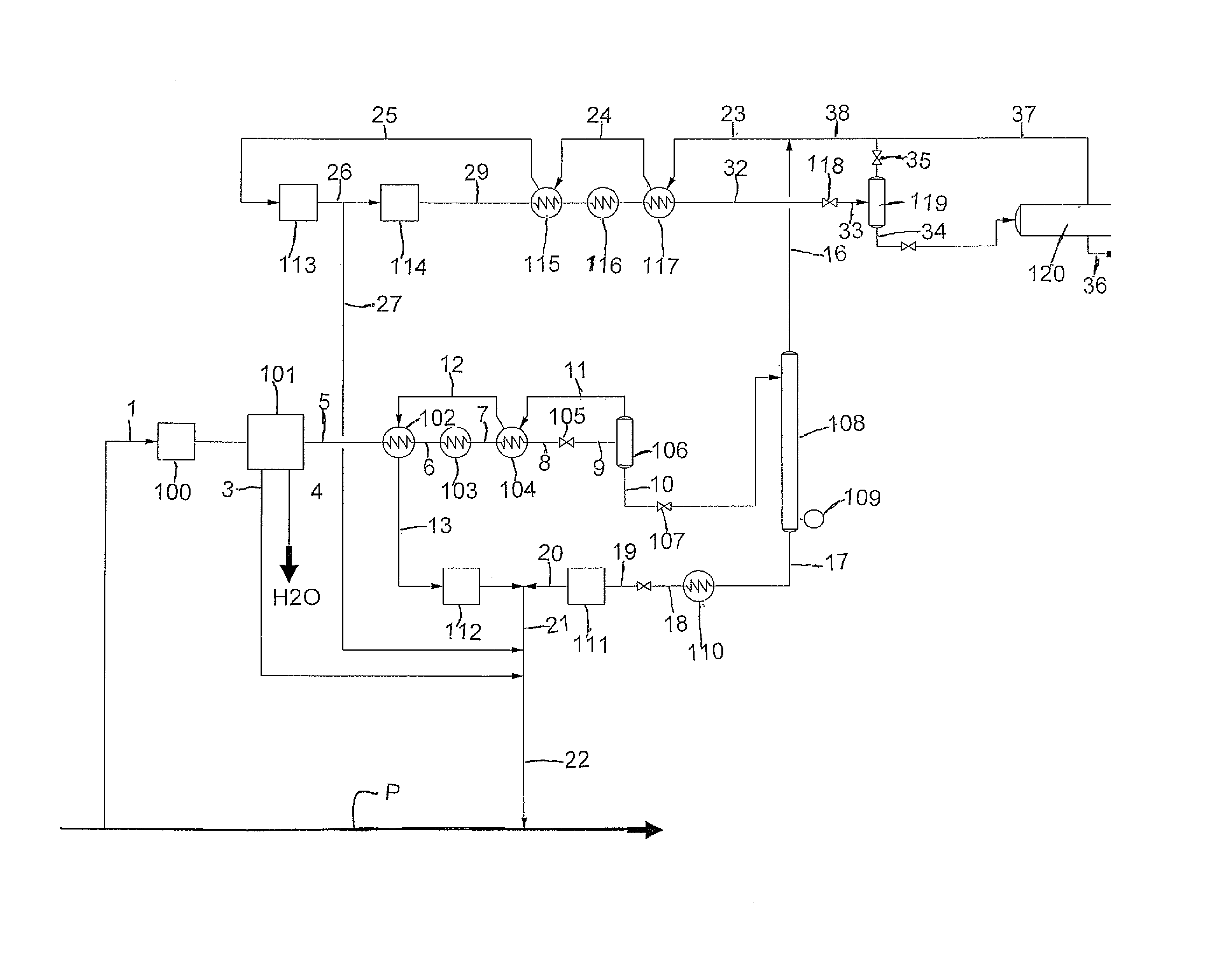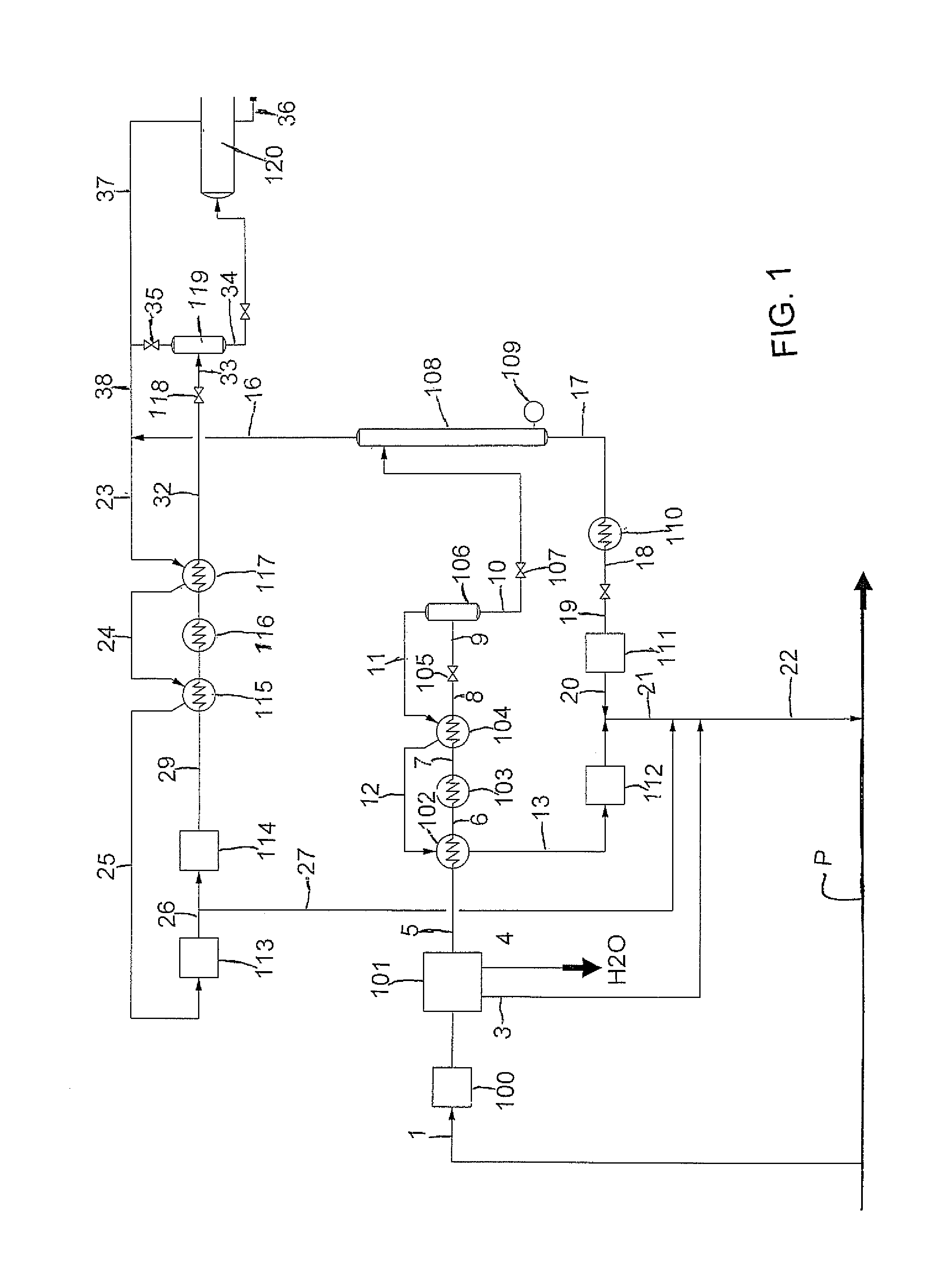Simplified LNG Process
a technology of lng and process, applied in the direction of cold treatment separation, liquefaction, solidification, etc., can solve the problems of pipelines that cannot be economically justified, gas volume is not enough, and the formidable problem of liquefying fuel, etc., to achieve the effect of producing lng on a small scal
- Summary
- Abstract
- Description
- Claims
- Application Information
AI Technical Summary
Benefits of technology
Problems solved by technology
Method used
Image
Examples
Embodiment Construction
[0028]The process as shown in FIG. 1 proceeds in two stages. The first stage 1 is the purification step where unwanted gases such as CO2, water vapour, sulphur compounds and gases lighter than or heavier than methane are excluded from the feed gas 1.
[0029]The Feed gas at stream 1 from the pipe line P is fed to a compressor 100 and then to a stream to an adsorption unit 101. Since the LNG process is cryogenic it is also necessary to exclude CO2 and water vapour from the gas in unit 101 to avoid freezing problems in the low temperature equipment. Water is discharged in stream 4. The feed gas at stream 5.
[0030]The first stage separates the feed gas into two streams 16 and 21.
[0031]The first stream 16 is a cold stream that has sufficient of the contaminants extracted to meet product specifications for composition of the LNG and the second stream 21 that contains a significant quantity of the original natural gas from the natural gas supply plus substantially all of the components reject...
PUM
 Login to View More
Login to View More Abstract
Description
Claims
Application Information
 Login to View More
Login to View More - R&D
- Intellectual Property
- Life Sciences
- Materials
- Tech Scout
- Unparalleled Data Quality
- Higher Quality Content
- 60% Fewer Hallucinations
Browse by: Latest US Patents, China's latest patents, Technical Efficacy Thesaurus, Application Domain, Technology Topic, Popular Technical Reports.
© 2025 PatSnap. All rights reserved.Legal|Privacy policy|Modern Slavery Act Transparency Statement|Sitemap|About US| Contact US: help@patsnap.com


